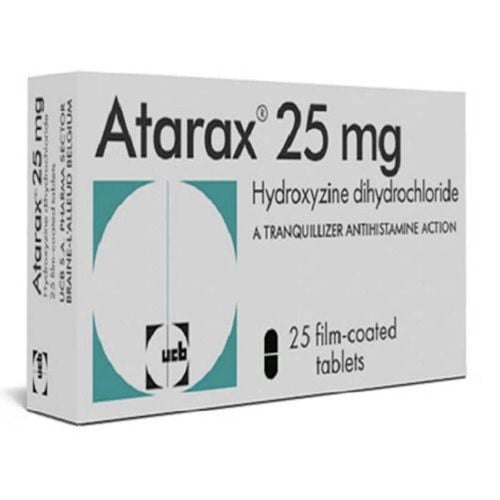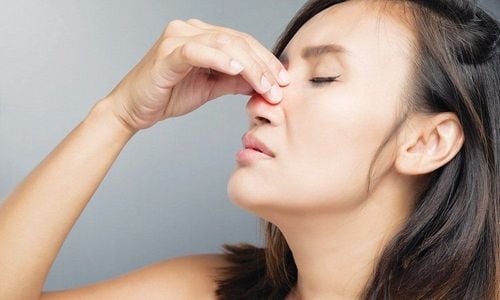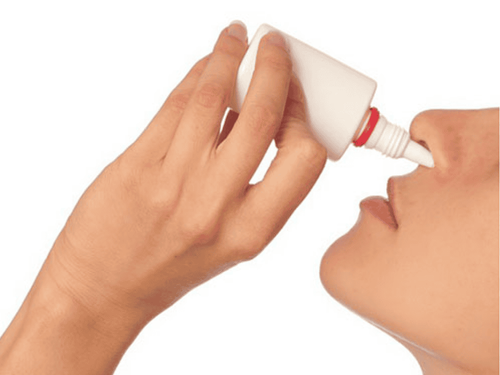This is an automatically translated article.
The article is professionally consulted by Master, Doctor Truong Thanh Tam - Pediatrician - Department of Pediatrics - Neonatology - Vinmec Danang International General Hospital. Dr. Tam has 15 years of experience working in the field of Pediatrics, has participated in many national and international scientific conferences on pediatrics and participated in many short-term training courses. His strength is diagnosis and treatment of hematological pathology - Pediatric oncology, resuscitation, pediatric emergency.And resident doctor Duong Van Sy - Department of Pediatrics - Neonatology - Vinmec Hai Phong International General Hospital.
Atopic dermatitis (atopic eczema, eczema) is the most common skin disease in children, causing a lot of discomfort for children. Proper skin care not only reduces discomfort in children, but also helps prevent complications of the disease.
1. Complications of atopic dermatitis in children
Atopic dermatitis in children is mainly related to family factors (ie, genetic factors) and allergic factors. Children are often more at risk of developing this disease when their family or children have other allergic diseases (such as bronchial asthma or allergic rhinitis). Nearly 50% of patients may be stable in their teens, but there are also many cases where the disease persists for years into adulthood. Atopic dermatitis in children often presents with dry skin, a red rash on the face, on the scalp, arms, legs or behind the ears. In toddlers and older children, the rash usually appears on the skin around the knees, wrists, elbows, and ankles. In some special cases, the rash can appear on the whole body of the child. The rash is often very itchy, even making the child sleepless at night.
Hot: Thick clothes, hot fabrics, hot baths, heaters,... Dry: Using soap, air conditioning, dry, hot weather... Itching: Labels on clothes, animal hair, grass, sand, dust,... Virus infection or some bacterial infection. Other factors: Chemicals, environment, allergens,...
Trắc nghiệm: Sự phát triển tinh thần, vận động của bé thế nào là đúng chuẩn?
Khi nào bé biết nói, biết hóng chuyện hay biết cầm cốc là "đúng chuẩn"? Điểm xem bạn biết được bao nhiêu mốc phát triển tinh thần, vận động "đúng chuẩn" của bé nhé!The following content is prepared under supervision of Thạc sĩ, Bác sĩ y khoa, Ma Văn Thấm , Nhi , Phòng khám Đa khoa Quốc tế Vinmec Dương Đông(Phú Quốc)
2. Skin care for children with atopic dermatitis
2.1. The purpose of proper skin care Improve disease symptoms: reduce itching, reduce inflammation. Moisturizes the skin and regenerates the skin. Protect the skin. Prevention and treatment of infections. 2.2. Control itching for children Itching will cause children to scratch a lot and make atopic dermatitis in children worse, even causing infection. To reduce itching for children, you can use some of the following methods:Apply damp or use wet bandages to the damaged skin. Clean children's hands, do not let children's nails long. Distract the child's attention when the child is itching and scratching a lot, such as playing games, watching TV, ... Use medicine for children according to the doctor's instructions. Wet dressings (or moist patches) are used if atopic dermatitis in a child is not controlled within 24 to 48 hours after starting cortisone treatment. Wet dressings (or moist dressings) usually only take three to five days to see results. It is possible to mix a solution to increase the moisture content of the skin as prescribed by the doctor to be more effective. The number of times a child's wet dressing (or moist dressing) is applied is usually several times per day, depending on the severity of the disease. The specific steps are as follows:
Step 1: Wet a towel (or bandage) with warm water mixed with a skin-moisturizing solution. Step 2: Apply cortisone (or drugs prescribed by the doctor) to the dry, red papules. Step 3: Apply a body moisturizer. Step 4: Depending on the location of the skin damage, use a wet or damp bandage: Face: Wet a soft towel with cool water, then apply it to dry, red papules for 5-10 minutes. Head area: Wet a towel or a soft cotton hat with cool water, then cover the child's head for 5-10 minutes. Hands and feet: Use a flexible bandage (like a sock with two open ends) or a soft towel wetted with cool water, and put it on (wrapped) on dry, red papules on hands and feet. Then, put on a dry tube bandage (or dry towel) over it. When the bandage (towel) is dry, it will be removed, applied moisturizer, and dressed in normal clothes for the child. Back, chest, abdomen: Use a soft cotton shirt wetted with cool water, then put it on the child and put on a dry shirt outside, until the shirt is dry, take it off, apply moisturizer and wear it. Normal clothes for children.
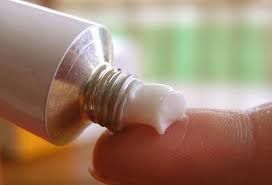
2.4. How to bathe your baby Too hot water will make your baby's skin dry and itchy, so don't bathe your baby with too hot water, only use warm water (no more than 30 degrees Celsius or cooler, depending on the weather when bathing). ). Bathing the baby needs to be done every day, so use shower gel instead of soap (because soap makes the skin drier). Children should be soaked in a basin or bath mixed with shower gel for 15 - 30 minutes to enhance skin hydration. The time to bathe the baby is 2 hours before bed to help the baby sleep better.
If the child has specific instructions and instructions from a specialist, they need to be followed.
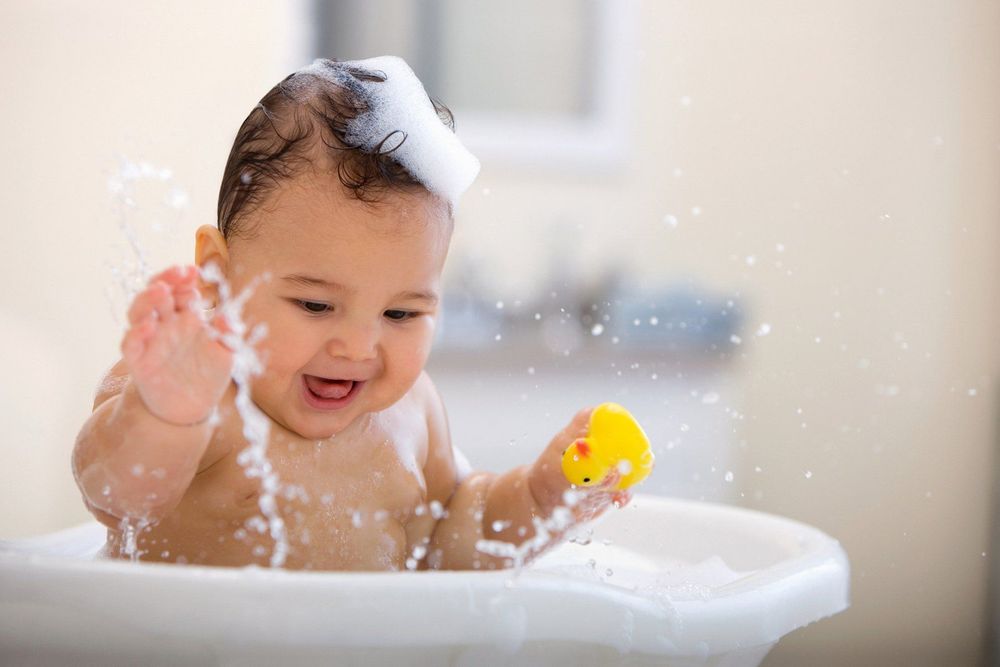
Gathering a team of leading pediatricians: including leading experts with high professional qualifications (Professor) , associate professor, doctorate, master), rich experience, worked at major hospitals such as Bach Mai, 108.. The doctors are well-trained, professional, have a heart - reach, knowledge. understand child psychology. In addition to domestic pediatric specialists, the Department of Pediatrics also has the participation of foreign experts (Japan, Singapore, Australia, USA) who are always pioneers in applying the latest and most effective treatment regimens. . Comprehensive services: In the field of Pediatrics, Vinmec provides a series of continuous medical examination and treatment services from Newborn to Pediatric and Vaccine,... according to international standards to help parents take care of their baby's health from birth to childhood. from birth to adulthood Specialized techniques: Vinmec has successfully deployed many specialized techniques to make the treatment of difficult diseases in Pediatrics more effective: neurosurgery - skull surgery, stem cell transplantation. blood in cancer treatment. Professional care: In addition to understanding children's psychology, Vinmec also pays special attention to the children's play space, helping them to have fun and get used to the hospital's environment, cooperate in treatment, improve the efficiency of medical treatment.
Please dial HOTLINE for more information or register for an appointment HERE. Download MyVinmec app to make appointments faster and to manage your bookings easily.






